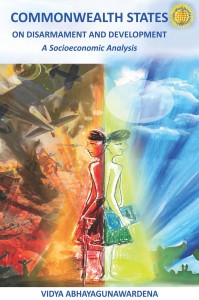Sunday Times 2
Legal instruments provide a pathway to peace
View(s):One publication that’s recently come across our desks here at United Nations Institute of Disarmament Research (UNIDR) is Vidya Abhayagunawardena’s new book Commonwealth States on Disarmament and Development: A Socioeconomic Analysis.
The nature of the multilateral disarmament context in New York and Geneva often results in practitioners like diplomats, civil society advocates and United Nations staff being accustomed to slice-and-dice categorisations of the international community in certain ways such as Non-Aligned, Eastern Group, Western Group. These categorisations help to shape mindsets. This is also true in the sphere of development work, which has its own typical categorisations. It matters because what we name things, and how we sort them in our minds, has an influence on the way we subsequently think and act.
However, all politics has a cultural substrate. Whatever the political or economic differences between states in the Commonwealth after independence from British colonial rule in the 20th century (and there are many), it’s also clear that there is a common bank of institutions, practices and cultural references that has kept the Commonwealth relevant as an idea and an institution. One only has to see the huge popularity of a sport like cricket – a pastime unfathomable to most non-Commonwealth outsiders – in post-colonial entities as diverse as New Zealand, South Africa, the West Indies and Abhayagunawardena’s own country, Sri Lanka. Without overstating their decisiveness (after all, India and Pakistan have fought wars on several occasions, despite the popularity of cricket in both countries), such commonalities can, in principle, strengthen cultural, social and business links between nations, and in that way strengthen peace and the rule of law.
So it’s refreshing to see an analytical frame like Abhayagunawardena’s. His book explores Commonwealth member states’ commitment toward and adherence to six international treaties related to disarmament and development: the Nuclear Non-Proliferation Treaty, the Convention on Certain Conventional Weapons, the Anti-Personnel Mine Ban Convention, the Convention on the Rights of Persons with Disabilities, and the newest one of them all – the Arms Trade Treaty.
Abhayagunawardena argues that adherence to these international legal instruments provides a pathway to peaceful societies and to their greater commitment to human security. Their disarmament treaty commitments are analysed alongside various socioeconomic indicators, including population, GDP per capita income, the Human Development Index, the Millennium Development Goals and so forth.
By bringing a wealth of information together in one volume, the author has created a valuable resource for anyone seeking to familiarise themselves with the most internationally significant Commonwealth countries’ adherence to recent disarmament law. Abhayagunawardena’s recommendation that the Commonwealth Heads of Government Meetings should begin to hold regular disarmament and development discussions (and maintain a disarmament ‘index’) is thus intriguing, and might usefully help to focus attention on the dissonance sometimes observed between member states’ words and deeds.
(Dr. John Borrie is Senior Researcher & Policy Advisor of United Nations Institute for Disarmament Research (UNIDR) in Geneva)
| Book facts
Disarmament and Development in Commonwealth States: A Socioeconomic Analysis by Vidya Abhayagunawardena |


